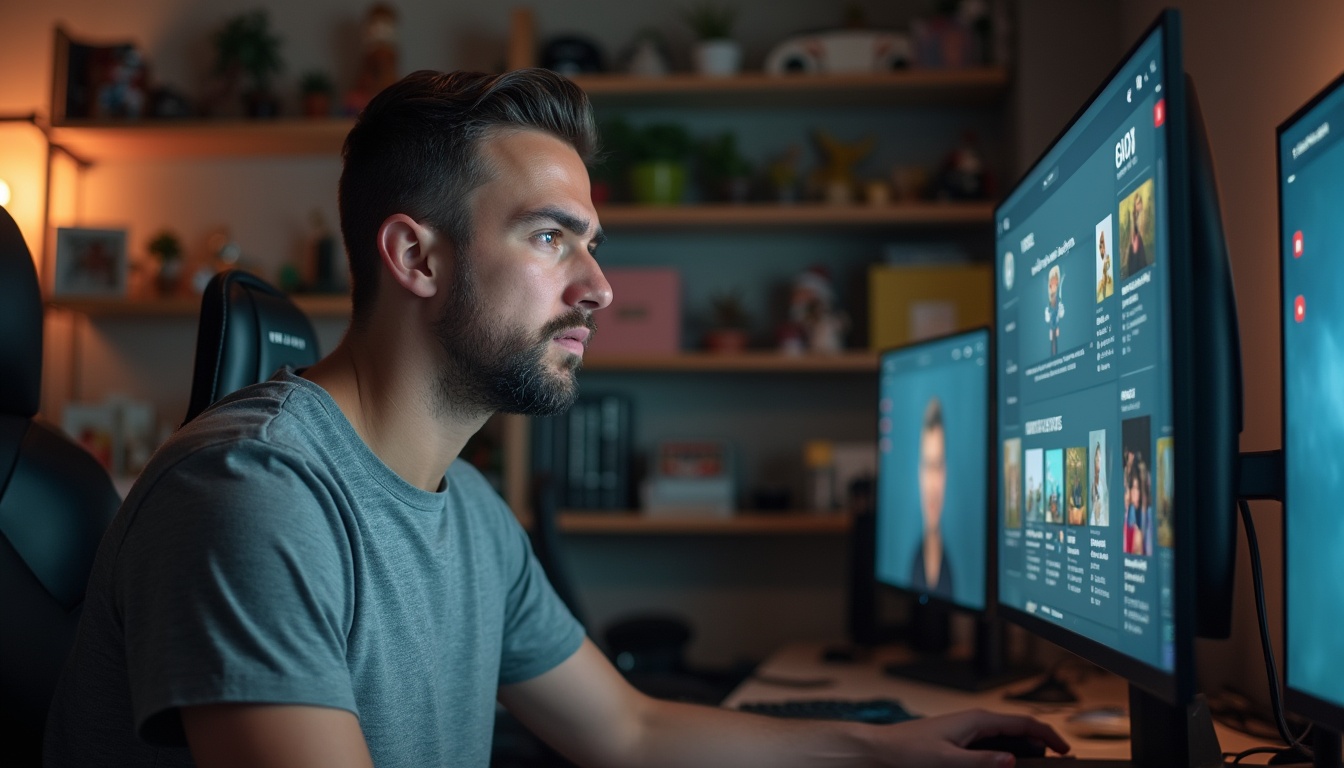If I’d told my younger self I’d make five figures a month from podcasting—without ever showing my face or even using my own voice—she’d probably laugh and go back to doodling in her notebook. Yet here I am, neck deep in a world where AI bots do the chatting, scripts are conjured at the click of a button, and visuals come together from pixels and prompts. I stumbled into this business almost by accident—and now, I can’t believe more people aren’t rushing in. Let me tell you how it all unfolded, what works, and why this is *nothing* like any other online hustle I’ve tried.
1. The Unspoken Goldmine: Why AI Podcasts Are Flourishing (While No One Notices)
There’s a new AI podcast business opportunity that almost no one is talking about, and honestly, it surprises me. Over the past few months, faceless YouTube channels have quietly started earning upwards of $11,000 per month, with some channels gaining millions of views using only basic AI tools. The process is simple—creators use apps like Leonardo, Canva, and WonderCraft AI to generate hosts, scripts, and voices. The result? Realistic, chatty podcasts that people actually want to listen to.
What’s wild is that even channels less than a year old are outperforming traditional YouTubers. One channel hit 450,000 subscribers and 10.9 million views in just seven months. Research shows passive income with AI podcasts is growing fast, and faceless YouTube channels revenue can be shockingly high. As I see it,
"there are tons of untapped opportunities to make money doing this."

2. Tech Under the Hood: AI Tools Powering the Faceless Podcast Revolution
When I first explored AI tools for podcast creation, I was genuinely surprised by how seamless the process has become. WonderCraft AI quickly became my go-to for generating podcast scripts and audio. Its new Convo Mode is a game changer—no more robotic exchanges. Instead, it mimics real, overlapping conversations, making hosts sound like they’re actually interacting. As I often say,
"This isn't just AI stitching two voices together. It’s generating an actual, proper human conversation."
Before committing, you can try WonderCraft’s free mini podcast feature, which is perfect for experimentation. For visuals, I rely on Canva for podcast visuals and Leonardo AI image generator to create lifelike host images. Editing is a breeze with Clipchamp. The integration between these tools means solo creators can handle the entire workflow, from script to upload, without missing a beat. Honestly, it almost feels too easy.

3. Unmasking the Process: How I Actually Created an AI Podcast From the Ground Up
Honestly, the process of AI podcast script generation is much simpler than you might expect. I started by using ChatGPT to summarize articles and prep show notes for WonderCraft. WonderCraft is my go-to for AI-generated podcast tutorials—it lets you pick hosts, customize voices, and even allow for natural interruptions between speakers. You can tweak scripts and preview voices before finalizing the audio, which really helps with quality.
For visuals, I turned to Canva for podcast visuals, using gradients, text templates, and image frames to brand the show. Host images were made with Leonardo’s free model and adjusted for the right vibe. The final step? I combined everything in Clipchamp, my favorite free tool for video editing for podcasts. Adding waveform overlays and episode titles was easy. “It’s pretty simple. But as I said, to generate podcasts, you will need a creator account...”

4. Is the Money Real? What Analytics And Payouts Actually Look Like
When I first stumbled into the world of faceless YouTube channels, I was skeptical about the revenue claims. But the analytics don’t lie. Channels in the AI podcast niche are regularly earning between $4,000 and $11,000 per month from YouTube AdSense alone. I’ve seen new channels rack up over 450,000 subscribers and 10.9 million views in just seven months. Even podcasts made with outdated AI tools—less realistic voices, less emotion—still attract millions. ViewStats and YouTube analytics make it easy to track this growth and estimate income, especially for newer creators.
What’s wild is how passive income with AI podcasts is becoming a reality. Once the systems are set up, AI does most of the heavy lifting. As one creator put it,
“In this single niche alone, lots of other successful AI podcast channels less than a year old... are getting hundreds of thousands to over a million views each month.”

5. Unexpected Quirks, Curveballs, and Lessons Learned (And a Little Cheeky Bargain-Hunting)
When diving into WonderCraft AI podcast features, I quickly realized not everything is free—pro-level tools come with a price tag. But, being a bit cheeky, I emailed WonderCraft and asked for a discount for my viewers.
“To my surprise, they actually said yes.”
You can use the code wholesaleTed50 for 50% off your subscription’s first three months. That Discount WonderCraft subscription definitely helps.
Creating engaging AI podcasts also means wrestling with visuals. Tweaking AI hosts’ photos in Canva or Leonardo can get finicky—cropping and borders make a bigger difference than you’d think. Sometimes, the imperfections become the charm. My first podcast draft had an awkward intro, and I almost deleted it. Instead, I left it in, and viewers loved the quirky AI humor. Research shows that these unpolished, experimental moments often make AI podcast creation tools even more memorable and loved.

6. Breaking the Mold: Why AI Podcasts Could Be the Most Human Thing on YouTube
When I first started creating engaging AI podcasts, I never expected listeners to comment on how “real” the conversations sounded. With features like Convo mode in WonderCraft, you can now hear the host breathing, laughing, and even thinking aloud—just like a real person. “You can hear the host breathing, and you can hear them thinking aloud just like a real person does.” That’s actual feedback I’ve received.
Surprisingly, many fans prefer these raw, unpolished moments over highly produced shows. Community feedback on my channel often highlights the appeal of spontaneous tangents and even the occasional awkward pause. It’s funny—sometimes I wonder if my AI hosts started riffing old-school jokes, would anyone even notice? Would they care?
Based on my own experience and AI podcast reviews, authenticity—sometimes accidental—is what really drives engagement. Maybe the most “human” thing about my channel is how imperfect it feels, and that’s exactly what works.

7. Conclusion: The Future (and Fun) of Faceless AI Podcasting
AI podcasting is no longer a futuristic fantasy—it’s a wide-open field, and the opportunity feels bigger than ever. With just a few accessible AI tools for podcast creation and a willingness to experiment, anyone can launch a side-hustle or even a main gig. What surprised me most is how easy (and quirky) it is to get started; the AI-generated podcast tutorial and growing community support make the process smooth, even for beginners. There’s no need for a huge upfront investment—free and budget-friendly options like WonderCraft, Leonardo, and Canva lower the barrier to entry.
As more creators jump in, engagement grows, and a unique community is forming around the relatable charm of faceless podcasts. If you’ve ever wanted to try a digital hustle, now’s the time—before the secret’s truly out.
"With the right AI tools and a dash of creativity, even the quietest corner of YouTube can become a thriving, faceless business venture."
A big shoutout to @WholesaleTed for the valuable content! Be sure to take a look here: https://youtu.be/2emT3GBdV48?si=mlXffGrDAnhrcDBQ.



